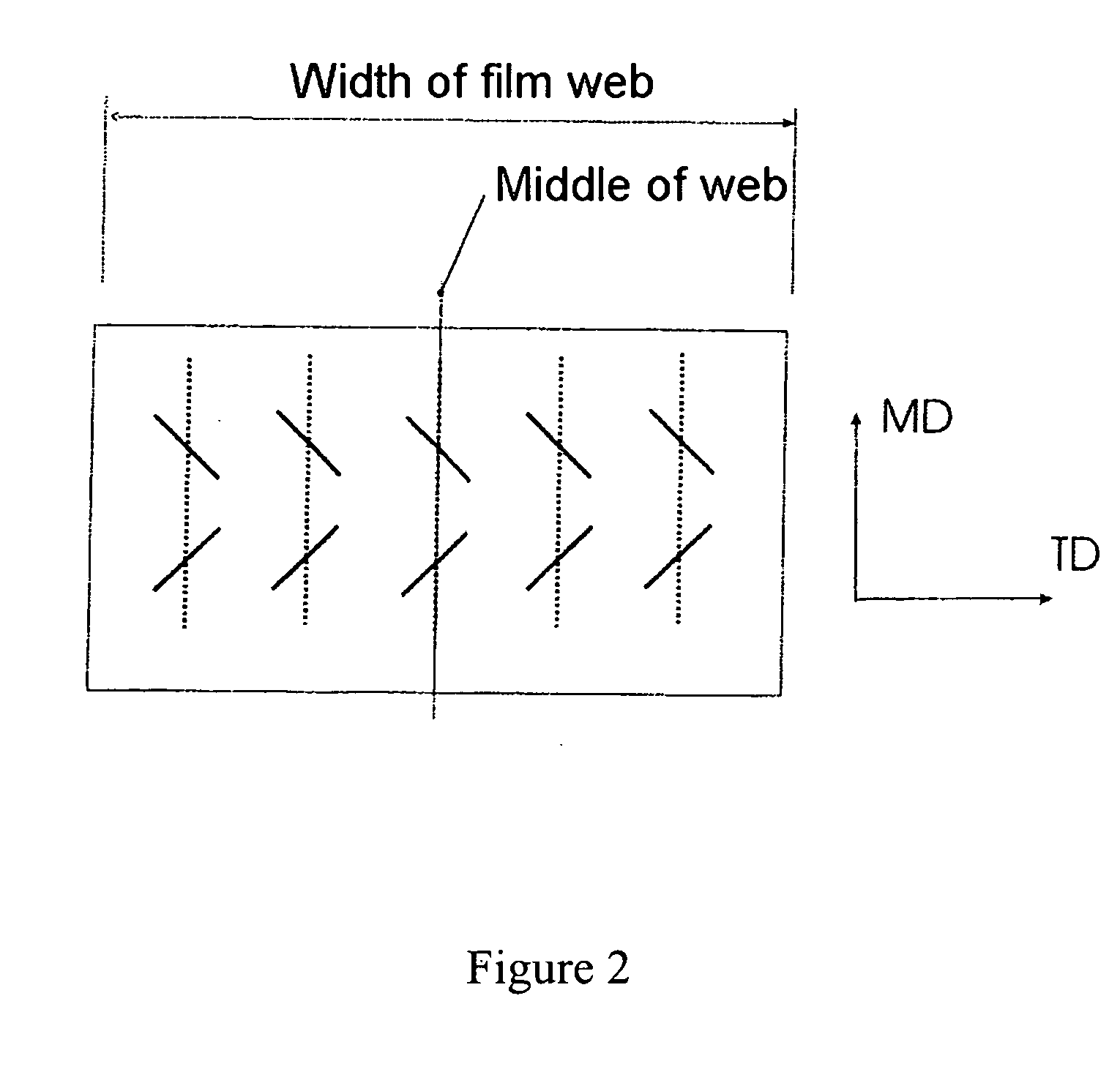White, steam-sterilizable and extrusion-coatable polyester film
a polyester film, extrusion-coating technology, applied in the direction of synthetic resin layered products, packaging, domestic packaging, etc., can solve the problems of inability to extend the value of transparent films to the present white films, the thickness of the film cannot be increased without limit, and the inability to equip a conventional transparent film with the desired combination of properties via pigment addition, etc., to achieve good light stabilization properties, good adhesion to inks, good optical properties
- Summary
- Abstract
- Description
- Claims
- Application Information
AI Technical Summary
Benefits of technology
Problems solved by technology
Method used
Image
Examples
example 1
[0123] N-2-(Aminoethyl)-3-aminopropyltrimethoxysilane (AEAPTMS) (supplied as Z-6020 from Dow Corning and as A-1120 from Union Carbide) was dispersed at a concentration of 2.0% by weight in customary tap water. For this, 5% strength acetic acid was added at a concentration of 0.2% by weight in order to facilitate hydrolysis.
[0124] Chips comprised of polyethylene terephthalate were dried at 160° C. to a residual moisture level below 50 ppm and fed to the extruder for the base layer B. A monoaxially oriented film was obtained via extrusion, followed by stepwise longitudinal orientation.
[0125] The longitudinally stretched film was corona-treated, using corona discharge equipment, and was then coated by the reverse gravure method with the hydrolyzed aminosilane solution prepared as described above.
[0126] The corona-treated, longitudinally stretched, coated film was dried at a temperature of about 110° C. The film was then stretched transversely with a stretching ratio of 3.8×1 in orde...
example 2
[0131] Example 1 was repeated, but the process parameters were changed:
LongitudinalStretching temperature:120° C.stretchingLongitudinal stretching4.0ratio:TransverseStretching temperature:110° C.stretchingTransverse stretching3.4ratio:SettingTemperature:230° C.Period:3 s
[0132] Under these conditions, too, a film was obtained with very good optical properties, with low coefficient of friction, with very good processing performance, and with very good winding quality. The film likewise exhibited the desired behavior on peeling from the cup. The film does not tear during this process, and it exhibits no tendency to delaminate.
example 3
[0133] Example 1 was repeated, but the thickness of the film was reduced from 55 to 36 μm. This comparatively thin film, too, has good processing performance, very good winding quality, and the desired performance when the film is peeled from the cup.
PUM
| Property | Measurement | Unit |
|---|---|---|
| Temperature | aaaaa | aaaaa |
| Temperature | aaaaa | aaaaa |
| Percent by mass | aaaaa | aaaaa |
Abstract
Description
Claims
Application Information
 Login to View More
Login to View More - R&D
- Intellectual Property
- Life Sciences
- Materials
- Tech Scout
- Unparalleled Data Quality
- Higher Quality Content
- 60% Fewer Hallucinations
Browse by: Latest US Patents, China's latest patents, Technical Efficacy Thesaurus, Application Domain, Technology Topic, Popular Technical Reports.
© 2025 PatSnap. All rights reserved.Legal|Privacy policy|Modern Slavery Act Transparency Statement|Sitemap|About US| Contact US: help@patsnap.com


